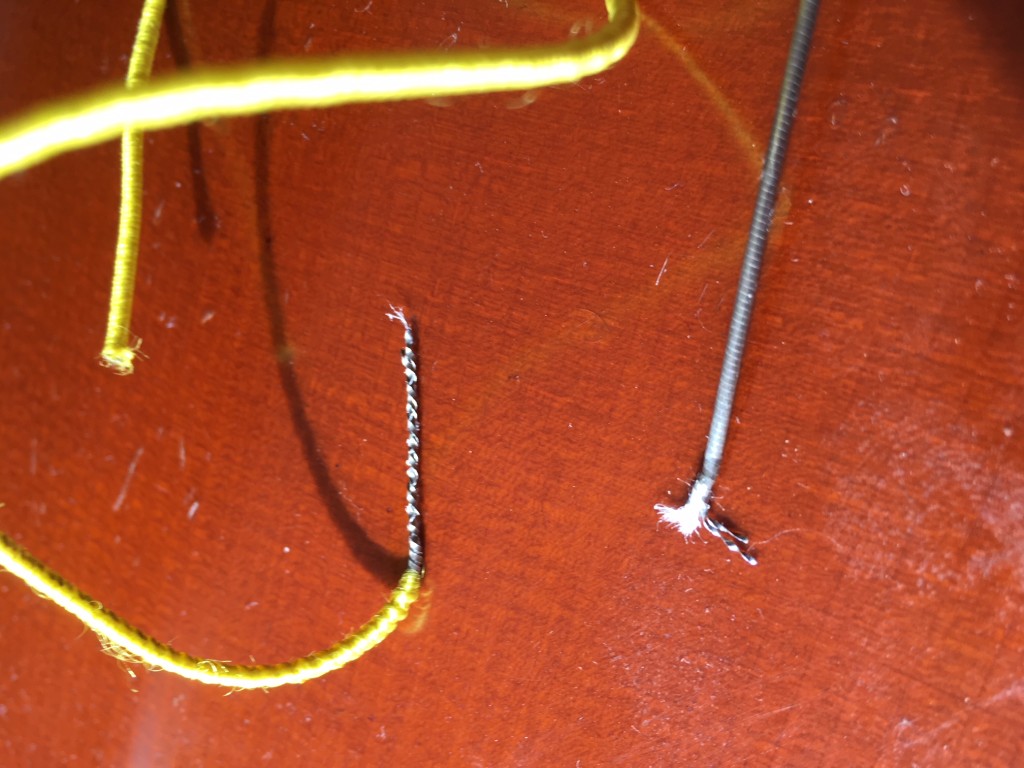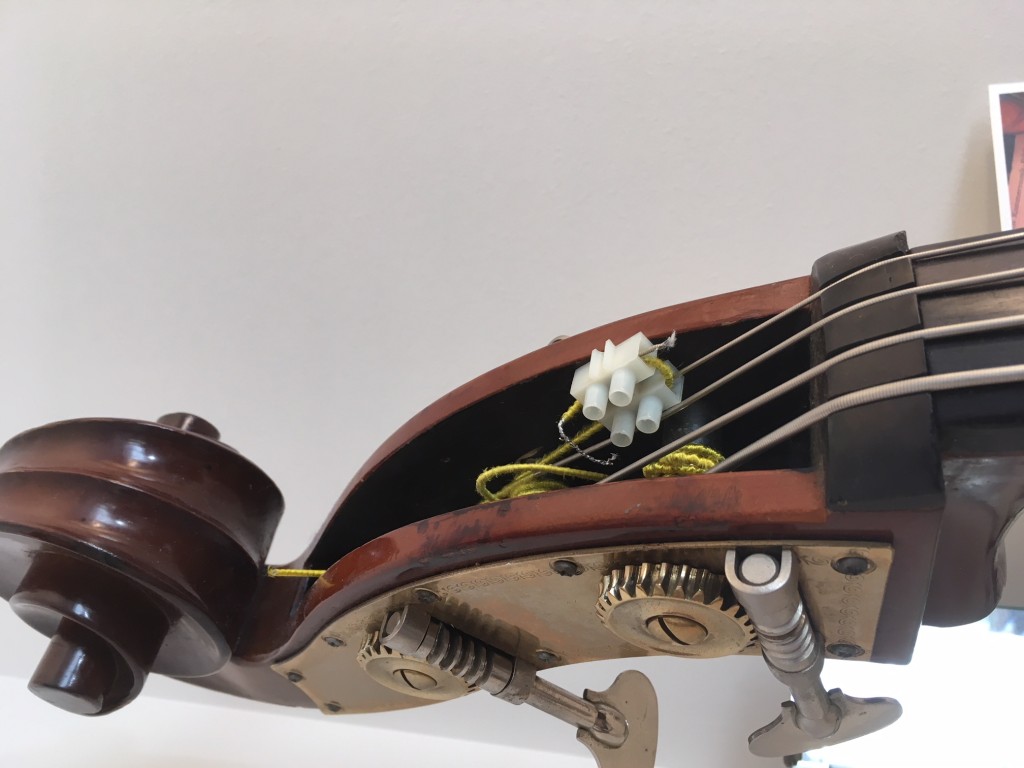Recently I did some restoration work on a Hofner double bass. To top off my work, I installed a new set of Thomastik Dominant Solo strings. The Dominant strings have a nylon core, sound and feel somewhat like gut strings, but, unlike gut strings, keep their tuning very well. I like to use a Solo set (even on a standard 3/4-size bass) because the lower tension (in normal tuning) is very easy to play whilst maintaining a sufficiently thick sound.
However, after only a very short time – probably about two months – the G string broke/tore at the point where the silk winding meets the outer metal winding around the tuning peg. (See string breakage photo below.) This is a very rare occurrence. Because I thought the cause may be due to a sharp edge in the tuning peg slot, I rounded the slot with a file – just to make sure this does not happen again.
Because it is quite difficult to acquire a single replacement string in a short time, I thought I would try a quick, temporary fix. So I thought about it for a while, actually until the “quick fix” solution came to me when I was not consciously thinking about the issue at all.
In my toolkit of tricks I found a terminal block (as used for electrical wiring work) which is perfect for this type of job, especially considering that the breakage was within the peg box of the bass. Importantly, to make sure there was no slippage due to the high string tension, I looped each string section through both channels of the terminal block. This has the advantage that each string section is tightened and held down by four screws.
It worked a treat – no slippage. Tuning is stable. Of course it looks odd (see photo below) but hey, whatever works works in “desperate” times.
What do you think?

